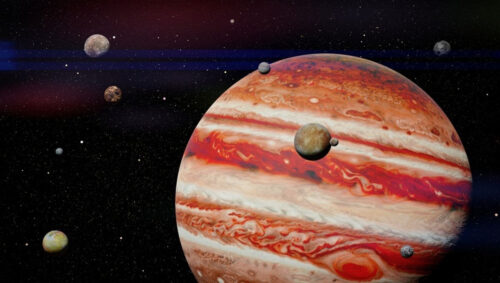
Jupiter’s Surprising Expansion: 12 New Moons Discovered, Including an Oddball on a Collision Course
Jupiter, the largest planet in our Solar System, continues to astonish scientists as 12 previously unknown moons have been unveiled in its orbit.
Among them is an unusual moon moving in the opposite direction, on a potential collision course with other moons encircling the gas giant.
This recent discovery challenges our understanding of Jupiter’s celestial neighborhood and provides valuable insights into the formation and composition of our planetary system.
In 1610, Galileo Galilei’s discovery of Jupiter’s four moons shattered the prevailing astronomical theories of the time.
Fast forward to today, where advancements in technology and research have revealed a total of 79 satellites accompanying Jupiter.
The recent addition of 12 new moons, as reported by a team of U.S. astronomers and documented in The International Astronomical Union’s Minor Planet Center’s Electronic Circular, brings forth a deeper understanding of the gas giant’s captivating system.
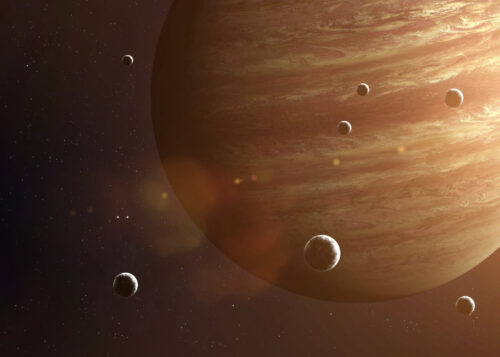
The search for these new moons was initially driven by the quest for Planet 9, a hypothetical ninth planet believed to exist beyond Neptune.
Astronomers directed their attention towards Jupiter as it passed through the observation region, capturing the interest of Scott S.
Sheppard and his team from the Carnegie Institution for Science. Utilizing the Magellan Telescope at the Las Campanas Observatory in Chile, they made the groundbreaking discovery of the 12 previously unseen moons.
The process of confirming these celestial bodies as legitimate moons of Jupiter was no easy task.
Gareth Williams, director of the International Astronomer’s Union’s Minor Planet Center, explained that it required multiple observations over the course of a year to establish their orbits and validate their association with Jupiter.
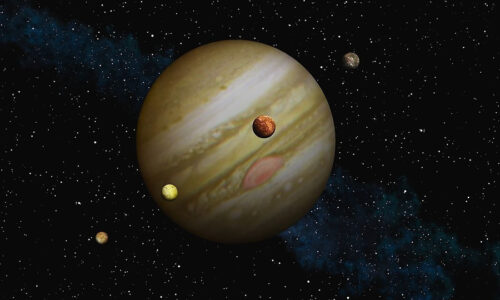
These newly found moons are relatively small, with diameters mostly measuring less than two miles.
They are significantly smaller than Jupiter’s four inner Galilean moons, one of which surpasses the planet Mercury in size.
Nine of the newly discovered moons follow retrograde orbits, meaning they move in the opposite direction of Jupiter’s rotation.
These moons are thought to be remnants of larger objects that shattered during collisions with asteroids, comets, or other moons.
In contrast, the remaining two moons have prograde orbits and orbit closer to Jupiter. They are believed to be remnants of a larger moon that fragmented over time.
Among the 12 moons, one has already been named Valetudo, after the Roman goddess of health and hygiene.
This peculiar moon resides among the retrograde moons, creating a head-on collision risk with its neighbors.
Although such collisions are rare, occurring once every billion years or so, their impact would be significant enough to be detected on Earth.
While the newly discovered moons await official names, Scott S. Sheppard contemplates inviting the public to contribute suggestions.
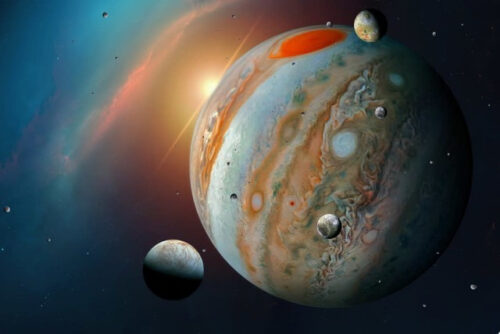
However, he has already vetoed the infamous suggestion of “Planet McPlanetFace.” The identification of additional moon-like objects around Jupiter remains a possibility, and Sheppard speculates that there may be more remnants from past collisions.
This raises intriguing questions regarding the definition of a moon and whether even the tiniest dust particles in orbit qualify for such a classification.
Nevertheless, the focus remains on analyzing these newfound moons and their potential to reveal the composition of our planetary system’s early stages.
Apart from expanding our understanding of the Solar System’s dynamics, these discoveries hold scientific value by providing insight into the remnants of the pre-planetary solar system.
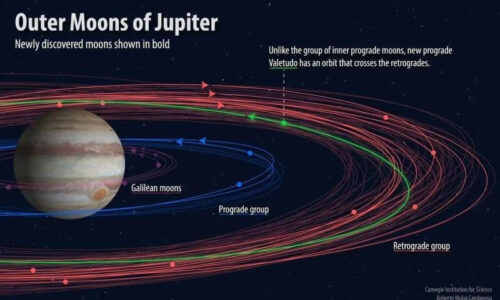
Jupiter’s immense gravitational pull has gathered most of the debris left over from the Solar System’s formation.
However, the newly discovered moons, suspended in Jupiter’s orbit, offer a glimpse into the composition and origins of the planets we know today.
As our exploration of the cosmos continues, the discoveries around Jupiter exemplify the awe-inspiring complexity of our celestial neighborhood.
With each new revelation, scientists gain further knowledge about the intricate workings of our Solar System and the mysteries that lie beyond.
